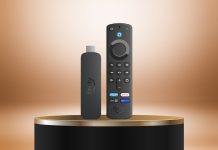I have tried several streaming gadgets over the years. Having spent many hours binge-watching programs, experimenting in casual gaming, and configuring smart home devices, I have learned to value the subtleties that set one gadget apart from another. As 2024 was well underway, I started going back over two of the top candidates in the streaming space: Roku and Amazon’s Fire TV Stick.
Here’s my take on which of these devices offers the best value in 2024, considering the following factors.
Device Overview
When it comes to Amazon’s Fire TV Stick, I’ve noticed that their range has grown considerably. Whether it’s the affordable Fire TV Stick Lite or the more powerful Fire TV Stick 4K Max and Fire TV Cube, there’s something for everyone. What I appreciate most is how these devices are integrated into the Amazon ecosystem. As a regular user, I’ve found the experience to be seamless, especially with Alexa taking center stage.
Roku, on the other hand, has always been a go-to for simplicity. The Roku lineup, including the Roku Express, Roku Premiere, Roku Streaming Stick 4K, and Roku Ultra, focuses on ease of use. There’s no aggressive push towards any particular service, which can be a relief if you’re tired of being bombarded by Amazon’s content recommendations.
User Interface
One of the first things I noticed when using the Fire TV Stick is how integrated it is with Amazon services. The interface is clean but undeniably heavy on Amazon content, which can sometimes feel a bit overwhelming. However, the Alexa voice remote is a game-changer. It incredibly easy to just ask Alexa to pull up a show or adjust the volume, especially when my hands are full.
Roku, in contrast, feels lighter with its neutral, straightforward interface. It’s not pushing any agenda, just giving you a simple, easy-to-navigate menu. For those who prefer a no-nonsense experience, Roku’s interface might be the winner.
Speed

Performance is where the Fire TV Stick 4K Max really shines. Its quad-core 1.8 GHz processor makes everything feel snappy, from navigating the interface to launching apps. The Fire TV Cube is even more powerful, and if you’re someone who wants speed and efficiency, it’s a no-brainer.
Roku devices, while solid, don’t quite match up in raw processing power. I noticed that heavier apps and games took a bit longer to load, and the interface isn’t as buttery smooth as it is on the Fire TV Stick. It’s not a huge issue, but if you’re a stickler for performance, Fire TV Stick is the way to go.
Content and App Availability
Though they approach things differently, both gadgets provide a ton of material. Access to all the big apps—Netflix, Hulu, Disney+—but what truly distinguishes the Fire TV Stick is its sideload app capability. I have installed outside applications that Amazon does not officially support using this capability. If you’re comfortable negotiating the process, this adaptability is great; however, it’s not for everyone.
Roku excels in offering a vast array of channels, including niche ones you might not find elsewhere. The Roku Channel, which provides free content, is a great feature. However, because Roku runs a closed system, you can’t sideload apps like you can on Fire TV Stick. This might be a dealbreaker if you’re looking to customise your experience.
Video and Audio Quality

In terms of video and audio quality, both devices are impressive, but I have to give the edge to the Fire TV Stick 4K Max. It supports 4K Ultra HD, Dolby Vision, HDR10+, and Dolby Atmos. During my use, I found that it consistently delivered stunning visuals and immersive sound, particularly when paired with a compatible TV and sound system.
Roku’s Streaming Stick 4K and Roku Ultra also deliver excellent quality, supporting 4K, HDR10+, and Dolby Vision. But I did see that Roku’s devices adopt newer Wi-Fi standards somewhat slower than others, which may compromise streaming quality on crowded networks. Having saying that, most users would find the change to be hardly noticeable.
Gaming Capabilities

Speaking of gaming, I’ve had some fun with casual games on the Fire TV Stick 4K Max. It’s not a replacement for a dedicated gaming console, but it handles games like “Asphalt 8” and “Crossy Road” just fine. Plus, you can pair a Bluetooth controller for a better experience.
Roku, however, isn’t designed with gaming in mind. The selection of games is pretty basic, and the hardware just isn’t up to par for anything beyond simple titles. If gaming is on your radar, Fire TV Stick is definitely the better choice.
Storage
Storage can be a bit of a sticking point with streaming devices. The Fire TV Stick’s latest model comes with 16 GB of internal storage, which I found to be enough for a decent number of apps and some games. You can also expand the storage using an OTG cable and an external USB drive—a feature I’ve taken advantage of to sideload additional content.
Roku, on the other hand, offers very limited storage, typically between 256 MB and 512 MB. This can be frustrating if you’re someone who likes to install alot of apps to have multiple options, as you’ll quickly run out of space. And there’s no option to expand the storage, which is a downside in my book.
Price and Value for Money

Both devices offer great value, but it really depends on what you’re looking for. The Fire TV Stick 4K Max is priced at around $39.99, and for what you get—especially the performance and flexibility—it’s a steal. At $49.99, the Roku Streaming Stick 4K is somewhat costly. If your primary focus is on a basic, no-fuss streaming device with a large spectrum of material, it’s difficult to surpass.
Final Verdict
After spending considerable time with both devices, I have to say that the Fire TV Stick wins out for me, particularly the 4K Max model. It’s got the processing power, the flexibility with apps, and the storage to handle pretty much anything I throw at it. Plus, the integration with Alexa and the Amazon ecosystem makes it a versatile tool.
This reflects a broader trend in the global streaming devices market, which is expected to reach $16.7 billion by 2026, rising at a market growth of 13.9% CAGR during the forecast period. I would not disregard Roku, however. If you like simplicity, a neat UI, and a large content base free of any specific ecosystem links, this is a wise choice. Roku could very well be the superior choice for someone who simply wants to connect, relax, and stream.
In the end, the choice boils down to your most valued streaming device feature. Both the Fire TV Stick and Roku have major offers to take into account in 2024 regardless of performance, personalization, or simplicity.





















